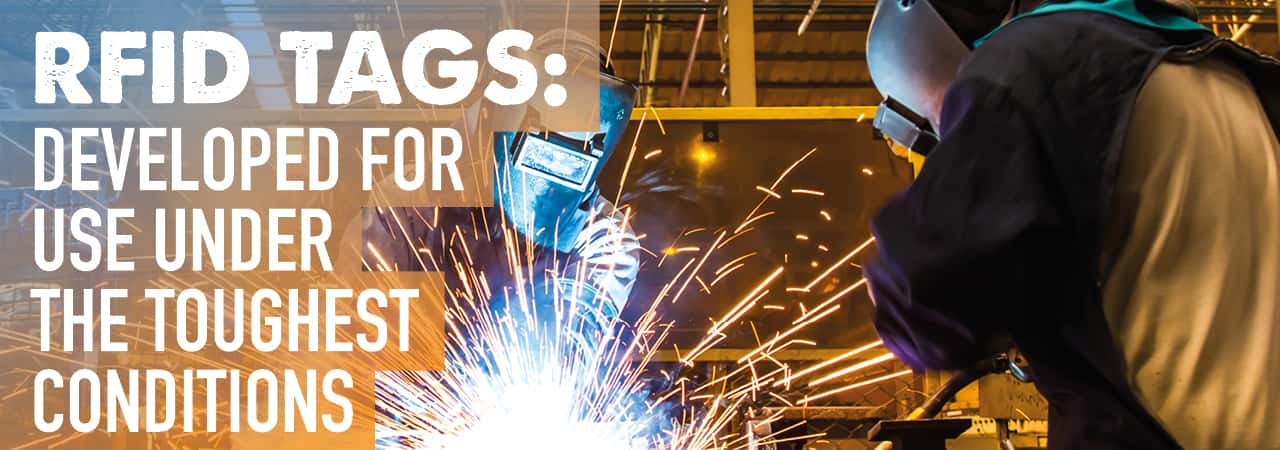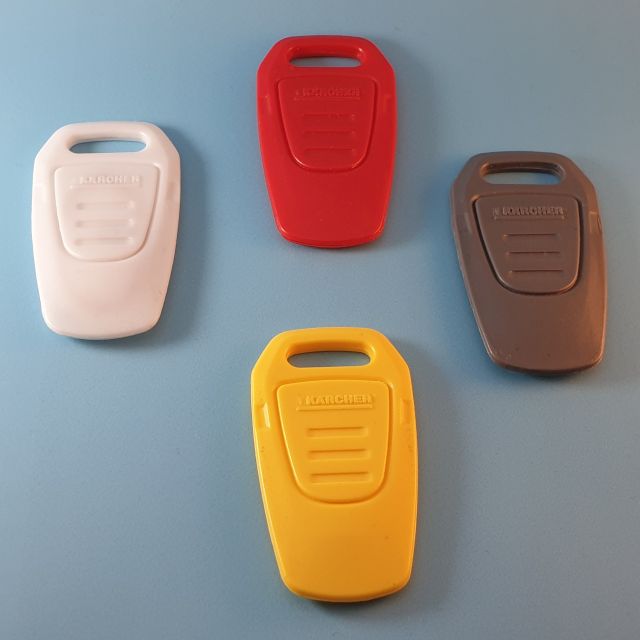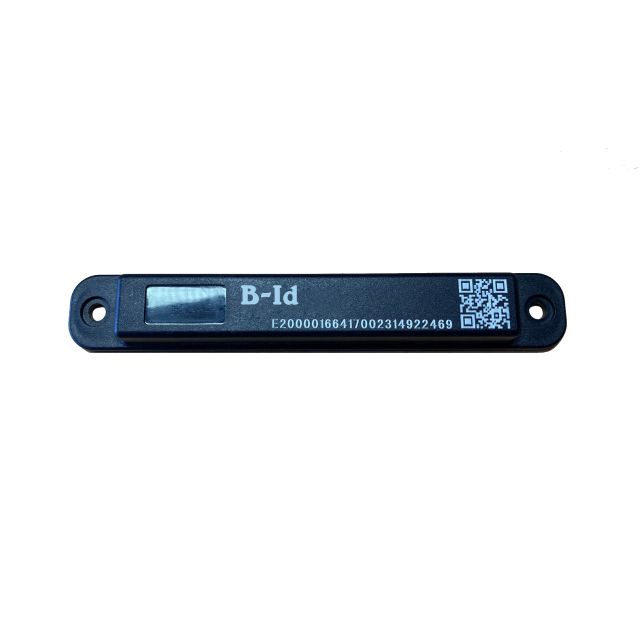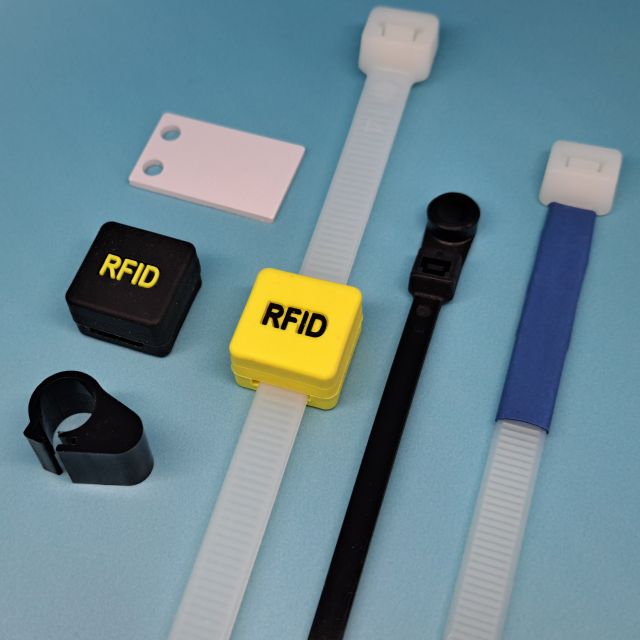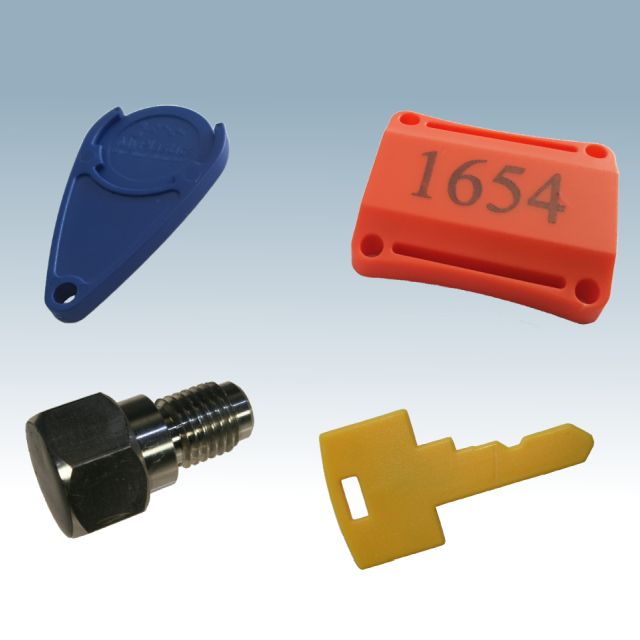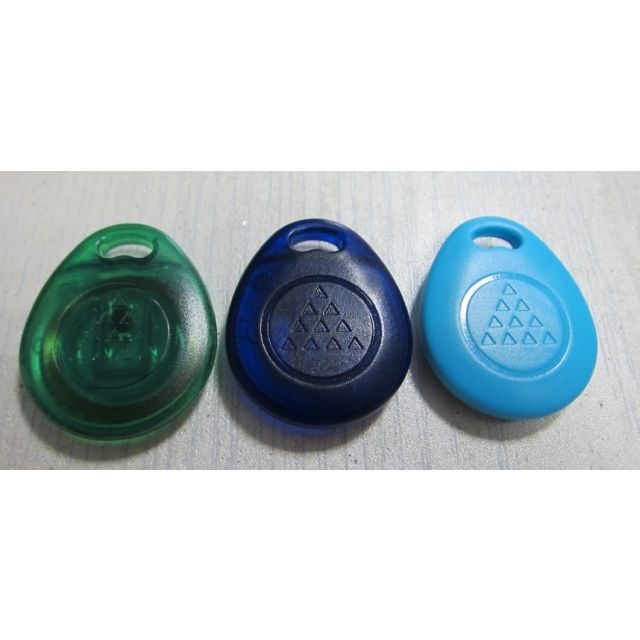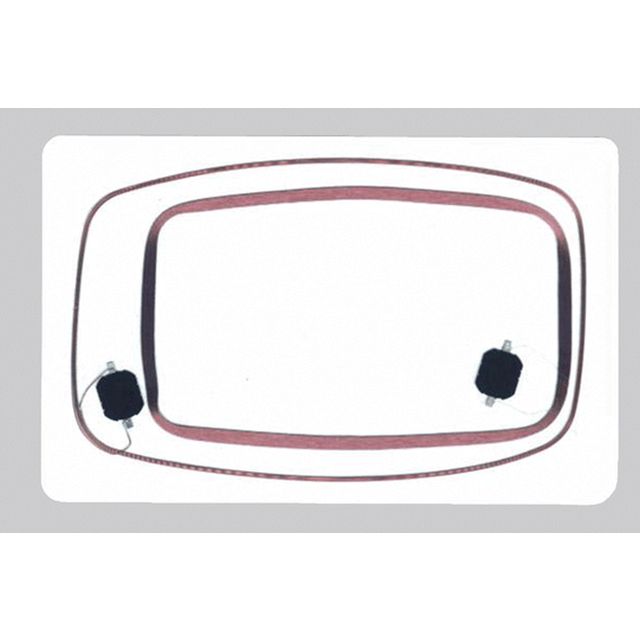B-Id focuses transponder development on the individualization of standard products
When exposed to high temperatures, strong mechanical effects or material-related radio wave interference, standard RFID transponders quickly reach their limits in terms of resilience. Special solutions are required for challenging conditions. Every transponder developed specifically for a particular requirement is a compromise between robustness and read/ range performance.
The RFID company B-Id specializes in taking all parameters into account and producing robust tags without compromising performance. If transponders are to be developed that must deliver optimum performance even under demanding physical environmental conditions, appropriate antenna tuning is essential, according to Yiwen Jin, Managing Director of B-Id, in an interview with RFID & Wireless IoT Global.
“Numerous challenges can be solved by targeted tuning. In principle, this is not rocket science. Often, for example, an additional antenna winding is sufficient to achieve the desired reading result. However, not every transponder manufacturer is prepared to take these individual development steps.
Questions First, Answers Later
For Yiwen Jin, the guarantee of success of a transponder development lies in direct contact with the users:
“We question numerous parameters and influencing factors. For transponder development, it is optimal to view processes directly at the potential customer's site. In industry, this can be the crucial step for the best possible solution. The answers to questions are crucial for transponder design, chip selection and antenna tuning. What is the environment in which the transponder will be used in the future? How do the processes on-site interact? This is best clarified through personal customer contact. We have standard products in our portfolio, which we make available as samples to interested parties. These cover a wide range of applications. In order to achieve 100 percent in all conceivable application scenarios, however, individualization is necessary.”
In-House Development and Exclusive Development Partnership
The development and production of transponders, keyfobs and smart cards takes place completely in-house. From the selection of materials for housings, to the selection of chips and antennas, including the bonding process, to fine tuning and production – all working steps are 100 percent in the hands of B-Id.
"We can react flexibly to new requirements and implement special requests. Since every tool for transponder production is also specially manufactured, the integration of company logos, for example, is not a problem. We are not dependent on technology partners and suppliers for development," reports Jin. With one exception: "For the development and production of fingerprint smart cards, we work exclusively with a single partner – the company Jinco. A strategic partnership has existed since 2014. Together, we were able to implement numerous, renowned security card projects over the past six years".
For instance, UN fingerprint ID cards are used for access control in buildings. Woori Bank – the fourth largest bank in South Korea and in 2020 one of the 100 largest financial institutions worldwide – issues fingerprint-protected bank cards to customers. To authorize cab drivers in their vehicles, batteryless fingerprint ID cards in the form of a biometric driver's license were developed.
Six Steps to the Right Transponder
If preliminary talks with users come to the conclusion that individual transponder development will lead to a suitable identification solution, product development begins along a plan with six steps.
"At every step, we coordinate with the customer and have prototypes sampled on a continuous basis. This ensures that the end product functions 100 percent as requested," explains Jin. The six steps:
- Selection of the appropriate technology
- Definition of the transponder design
- Determination of suitable materials
- Performance gain through professional antenna tuning
- Tool creation
- Series production
Where 'Special' is the Norm
B-Id has developed RFID tags for a wide variety of demanding industrial applications, which are used to optimize processes. The fact that 'robust' can't just be a word on a data sheet becomes clear when RFID transponders are used in the field of sandblasting. Using compressed air, electromagnetic fields or shot-blast wheels, abrasives such as sand or balls of ceramic, steel or blast-furnace slag are 'shot' at speeds of up to 160 meters per second onto surfaces to clean, deburr, remove paint or finish them. Transponders used in this environment must be able to withstand these extreme forces without compromising on functionality.
Sandblast Resistant Tags
B-Id develops application-specific transponder solutions for use in harsh, industrial environments. A special development: Sandblast resistant RFID transponders. Standard transponders are not suitable for use in sandblasting processes. "Even with high protection classes, sandblasting can still destroy the transponder housing and the electronics. For this reason, we have developed a special transponder with a particularly resistant cover for the customer," explains Yiwen Jin.
High Temperature Tags with Glass Fiber Reinforced Housing
When numerous requirements come together, both robust housings and stable electrical connections of the tags are essential for process-reliable reading. Due to the ever increasing demand for UHF transponders for applications on metal and under heat stress, B-Id has developed a tag series especially for these applications. The housings of the UHF hard tags for high temperature applications are made of robust fiberglass material.
The FR4 material is a glass fiber/epoxy mixture, which is also used for the production of computer circuit boards. FR4 is characterized by its high flame resistance in addition to its electrical and mechanical insulation properties. The UHF on-metal tags based on FR4 are particularly stable and heat resistant, and achieve a very good performance.
Over 200 Degrees Celsius? No Problem!
To ensure long-lasting functionality in high-temperature applications of over 200 degrees Celsius, such as in paint shops, the inlay is also crucial. Polyimide substrates and copper antennas are used as core building materials for the inlays. In conjunction with SMT (surface-mount technology) production, these transponders have an advantage in terms of durability over conventional inlays.
By using copper-polyimide inlays in combination with the FR4 housing, a heat exposure of over 200 degrees Celsius for more than twenty hours is possible, as tests by B-Id have confirmed.
Soldering Instead of Gluing Increases Stability
The SMT process creates a stronger and more rigid connection between the UHF IC and the antenna. Compared to conventional PET/ aluminum inlays based on the flip-chip process, the UHF chips and the antenna are not connected by conductive adhesives. Instead, there is a soldered metal connection between antenna and chip. The advantage of this is that no heat can cause the chip to lose adhesion.
By using a special soldering material, the SMT solder joints ensure connectivity even at high temperatures, so that performance is not compromised. Transponders that do not have to perform at peak performance under heat can be manufactured using the Wafer Chip Scale Package (WCSP) process. The possibility to do without extra packaging allows very small yet stable tag designs.
FR4 Hard Tag: Even Smaller and More Compact
Both the wideband antenna design and the metal connection are used in the second newly developed on-metal transponder. "The FR4 hard tag is smaller than the flexible tag. It is ten millimeters wide and, depending on requirements, 40, 50, 70 or 90 millimeters long and is only four millimeters high. The distance between the antenna and the ground is 2.6 to 2.8 millimeters. The tag is currently being used in IC production at a Taiwanese company to identify molding magazines.
During the test phase, the transponders on the magazines were exposed to temperatures of around 200 degrees Celsius for 20 hours a day for three months – and passed the endurance test. At B-Id, the tags were successfully tested internally at temperatures of up to 240 degrees Celsius for four consecutive 30-minute cycles without any damage to the transponder technology," explains Jin.
UHF RFID or Wideband Antenna for the Tire Industry
"In tire manufacturing, both metal and the rubber of the tires influence the transponder frequency. If a standard UHF tag is attached to a tire, the transmission frequency of 868 MHz breaks down by more than 200 MHz. The wideband antenna design provides a solution to this problem as well. For the tire industry, B-Id supplies pure inlays, which are either installed directly in the tire or stuck on finished tires as part of a smart label.
An alternative to the wideband design are inlays with a specially tuned UHF antenna from B-Id. If the frequency breaks down by more than 200 MHz, the transponder can still be read without any problems at around 800 MHz. Customers can choose the solution best suited to their needs – inlays with a wideband antenna or inlays with a specially tuned antenna," says B-Id's Managing Director.
Wideband Antenna Design Delivers Breakthrough
Metal influence is only reduced from a distance of five millimeters between tag and surface in the case of an on-metal tag with a standard antenna design. Among other things, B-Id has overcome the challenge of guaranteeing constant performance by using a wideband antenna design for a flexible tag developed by a Japanese university professor.
"Instead of placing the antenna on the front of the transponder as usual, B-Id's antenna runs from the front across the side to the rear, resulting in a screening effect. The tag can be read with standard readers," explains Yiwen Jin.
Flexible On-Metal Tag Reduced to a Height of 0.8 Millimeters
The patent pending antenna design is used in a specially developed flexible on-metal tag for the automotive industry. “The previous five millimeter distance from the antenna to the surface has been reduced to less than one millimeter. The tag is flexible and at the same time stable, so that it can be glued to uneven surfaces. With a size of 0.8 by 88 by 22 millimeters, a reading range of more than four meters can be achieved.
The effort of attaching transponders and spacers before the process and removing them again afterwards is eliminated. A continuous tracking solution is thus made possible. Optionally, optically readable information can be printed, for example in the form of a barcode,” emphasizes Jin.
Source: RFID & Wireless IoT Global, Special Edition Wireless IoT Technology 2020


